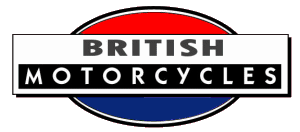


Edward Turner (January 24, 1901 - August 15, 1973) was a famous British motorcycle designer. He was born in Camberwell in the London Borough of Southwark, London, on the day King Edward VII was proclaimed King.
Edward Turner built his first bike in 1927, using his second design, a 350 cc OHC single. The Motor Cycle published a photograph of Edward Turner's patented engine, mounted in his motorcycle called the Turner Special. The Special was registered for road use with the London County Council as YP 9286. It used Webb forks, and a three-speed Sturmey-Archer gearbox.
By now, living at various addresses in Peckham and East Dulwich, in the London Borough of Southwark and running Chepstow Motors, a Peckham motorcycle shop with a Velocette agency, Edward Turner conceived the Square Four engine in 1928. At this time he was looking for work, showing drawings of his engine design to motorcycle manufacturers. The engine was essentially a pair of 'across frame' OHC parallel twins joined by their geared central flywheels, with a one-piece four-cylinder block (or Monobloc) and single head.
The idea for the engine was rejected by BSA, but adopted by Ariel. Thus it became the Ariel Square Four, and not the BSA Square Four. Edward Turner was then invited by Jack Sangster to join Ariel.
By 1929, at Ariel, Jack Sangster had Edward Turner and Bert Hopwood working under Val Page in design.
Edward Turner, now 28, married Edith Webley.
In 1936 Triumph sold the motorcycle company. Ariel owner Jack Sangster bought it and changed the name to Triumph Engineering Co.
Sangster made Edward Turner, now 35, General Manager and Chief Designer. In July 1937, Turner introduced the 500 cc Speed Twin.
In 1942 Turner left Triumph after a disagreement with Sangster, joining BSA as chief designer. He returned to Triumph in October 1943, and became Managing Director again in 1944.
Later the Triumph company was bought by BSA.
Edward Turner retired as Chief Executive of the Automotive Division (which included motorcycles) in 1963, but retained his BSA Directorship. He was apparently by this time unhappy about the direction the company was taking. Bert Hopwood had hopes of being appointed Turner's successor, but the job went to BSA's Harry Sturgeon.
BSA management now took over Triumph policy completely. Sturgeon decided to streamline motorcycle operations after McKinsey, an international business consultant, recommended treating the two companies as one.
1966 saw Edward Turner working on a large-displacement, four-cylinder engine design which was not built.
In 1967, Edward Turner, at 66, retired from the BSA Board and Harry Sturgeon took his place. Unlike Turner, Sturgeon was convinced Triumph had to be involved in racing, and John Hartle won the 1967 Isle of Man TT production event on a Bonneville, just before Harry Sturgeon suddenly died, and was replaced by Lionel Jofeh.
Source: Graces Guide
If you have further information or a query related to this page, please contact us